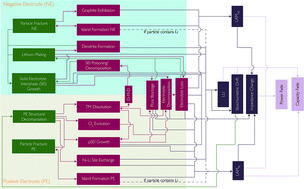The far more than a decade of evidence of studies on lithium ion batteries says the opposite of what you are saying.There is almost a decade of evidence to back me up.
The very fact that you use this kind of term "bricking" shows that you are viewing degradation as an ON/OFF kind of thing, which is not how degradation works. It is a gradual little-by-little thing, where small bits of damage can accumulate. And the extensive data on lithium ion batteries shows that the least amounts of degradation are when it is near a middle state of charge, and then there is increasingly a little more, the farther away from the middle you get in your usage--both higher or lower. It is not perfectly fine with no degradation at all through some very broad range, and then suddently, over some threshold degradation punches it in the face and severely damages it. It doesn't work that way.people would be bricking their batteries all the time.
Buffer at the bottom: yes, of course. That has been seen and measured pretty extensively. Top: no, usually not. Many other EV makers have done that, because of not giving very fine control of a charging limit. They try to simplify it with "full" that people get to use a lot, but they need that to not be truly 100%, so people aren't frequently causing a lot of damage. Tesla handles this in the other way, where they have 90%-100% marked off for "Trips" and recommend people to not use that constantly. So they do not need to have a hidden upper end buffer and they do not.There absolutely is a buffer at the top and the bottom.
This can be seen evidentially by charging slowing down to extremely slow levels, down to 2 and 1 amp when charging to what Tesla shows as full on the state of charge meter. It would not need to slow down that much at the very end if there was an unused upper buffer available. This was seen in some of the batteries that Tesla did offer for some time with software-locked upper capacity, like the "60" and "70" batteries, which were really 75 ones. They charged significantly fast up to their designated fake 100% points and then stopped suddenly because of the unused upper portion.
If you would be patient while I am composing my reply instead of argumentative, you would get it.Hey Rocky_H, if you are just going to disagree with everything, why don't you back it up with some actual info?
Here are some examples:
This study was showing much greater energy retention using a cycling range within 40%-60% state of charge level than the greater depth of discharge amounts, going higher and lower.
Here is another study on degradation. In the section about lithium plating, it mentions these things as exacerbating factors:
"Low temperatures, high SoC, high (charge) current, high cell voltage and insufficient NE mass or electrochemically active surface area can all cause lithium plating."

Lithium ion battery degradation: what you need to know
The expansion of lithium-ion batteries from consumer electronics to larger-scale transport and energy storage applications has made understanding the many mechanisms responsible for battery degradation increasingly important. The literature in this complex topic has grown considerably; this...
And this study is showing retained capacity based on where in the state of charge cycles are done. Running cycles of half of the battery capacity, but some at 50% to 100% versus centered around the midpoint by doing 25% to 75% showed that there was less degradation by using that middle state of charge than by doing it at the higher state of charge.

And again, this is not instantly "bricking" batteries, as you mentioned, but is causing some gradual loss of possible capacity over time, based on accumulated small bits of damage based on approximately what state of charge is used frequently.



